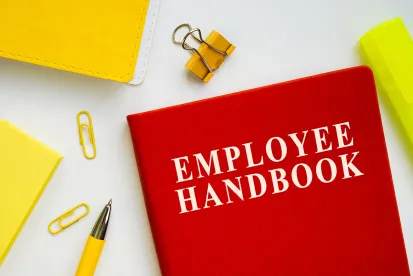Just yesterday, the National Labor Relations Board (“NLRB”) issued a decision (Stericycle Inc.), which overrules its own 2017 Boeing Co. decision and establishes a new standard for evaluating employer handbook policies and rules under the National Labor Relations Act (“NLRA”). Welcome (back) to what is the revolving door decision-making process that is the political machine of the NLRB.
Effectively, the current Biden NLRB has reversed one of the hallmark decisions of the Trump NLRB. When the Trump NLRB decided Boeing Co., it seemed to strike a balance in evaluating workplace rules, weighing the rule’s impact on workers’ NLRA rights against the employer’s legitimate business justification for the rule.
Although the concept of balancing those two potentially competing interests seems rational, the current NLRB Chair, Lauren McFerran, said that “Boeing gave too little consideration to the chilling effect that work rules can have on workers’ Section 7 rights.” NLRB Press Release 8/2/23. Taking that view to the extreme, the NLRB has shifted the bulk of the burden to employers to establish the legitimacy of the work rule. Under Stericycle, the most important consideration in evaluating a workplace rule is how an employee would understand it—not how the employer or a neutral third party might. The NLRB’s new approach is evident in this passage from the decision:
We clarify that the Board will interpret the rule from the perspective of an employee who is subject to the rule and economically dependent on the employer, and who also contemplates engaging in protected concerted activity. Consistent with this perspective, the employer’s intent in maintaining a rule is immaterial. Rather, if an employee could reasonably interpret the rule to have a coercive meaning, the General Counsel will carry her burden, even if a contrary, noncoercive interpretation of the rule is also reasonable.
372 NLRB No. 113, p.2 (emphasis added). Incredibly, if an employee could interpret the rule to chill the exercise of NLRA rights, the rule is presumed unlawful. The only way for an employer to rebut that presumption is “by proving that the rule advances a legitimate and substantial business interest and that the employer is unable to advance that interest with a more narrowly tailored rule.” Id. If the employer can prove both of those, the work rule will be found lawful. Good luck.
The deck is now stacked against employer work rules that have any potential ambiguity in the mind of an employee. Given the energy and zeal demonstrated by the NLRB General Counsel in seeking to hold employers accountable, it is reasonable to presume that the NLRB “handbook police” will return, leaving almost no handbook completely safe from attack. Employers should expect to see more scrutiny given to work rules and policies, especially those particularly sensitive ones such as anti-harassment and workplace conduct policies.



 />i
/>i
